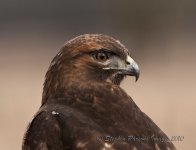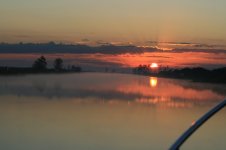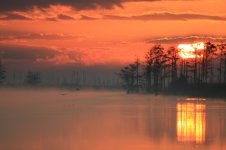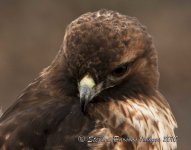Kathleen,
I am using Nikons. One is a D300, and the other is a D300s. These both have the APS-C sensors with 12.3 mega pixels. I went with these cameras because of the sensor size, and the burst rate of images per second. They also will allow me to use my old Nikkor film era lenses.
The APS C sensor is smaller than the old "35 mm" film size, and because of that there is a gain in the effective focal length of a lens. It varies between manufacturers, but is usually about 50% more. In essence, a 400mm lens has the reach of a 600mm lens.
I shoot multiple exposures on wildlife, hence the need for a high burst rate. I get about 8 images a second, but usually shot about 3 or 4 exposures per press of the shutter.
Although the cameras with APS C size sensors are fantastic cameras, if you are not going to specialize in wildlife photography, you might consider a "full size" sensor. These have sensors that are roughly the same size as 35mm film, typically have higher pixel counts, and the focal length of the lens is not given the "boost" that an APS C sensor provides. These cameras are wonderful for landscape and portrait type work. They have great image quality and resolution. Another up and coming sensor system is Four Thirds, which is again smaller than even APS C. This makes for physically smaller cameras and lenses.
Where as you can sink a bunch of money into camera bodies, you can really sink money into lenses. When you purchase a camera with a "kit" lens, you get a good lens, but usually not a great lens. Kit lenses are normally entry level and don't have the quality optics that a pro lens has. The kit lenses are great for snapshots. Most are zooms that range from around 18mm to 200mm focal lengths, with an aperture that will open up to about f3.5. They normally do not open as wide as a prime lens.
For landscape, I use a Tokina 11-16mm f2.8 lens. For wildlife, I use a Nikkor 200-400mm f4.0 VR and an old Nikkor 600mm f4 manual focus lens. Something to consider is the "VR" (Canon calls it IS) feature that I mentioned. This stands for Vibration Reduction or Image Stabilization (Canon), and allows you to shoot hand held in more situations (versus shooting on a tripod or bean bag). VR really makes a difference!!! Some camera makers use in body stabilization, rather than the lens based stabilization that Nikon and Canon use.
Consider getting a good quality tripod and head when you purchase, as well as a few filters. A polarizing filter, plus a few neutral density filters (allows you to slow down the shutter and open the aperture). I am torn about UV or haze filters. Typically, people say that they protect the lens, and I have seen them save an expensive lens when dropped. I am beginning to believe that they introduce a bit of variance in the autofocus systems, resulting in somewhat less crisp images.
When you purchase, I highly recommend that you go through a quality local camera shop rather than a big box store or on-line. I use ProPhoto here in Portland, and would never consider going on-line. David Cleary is the Nikon guru at ProPhoto, and the person that I prefer to work with there. Not knocking the other employees at all, but David is the guy that asks the questions that bring our your needs in a camera.
OK, I am off the lectern now....






